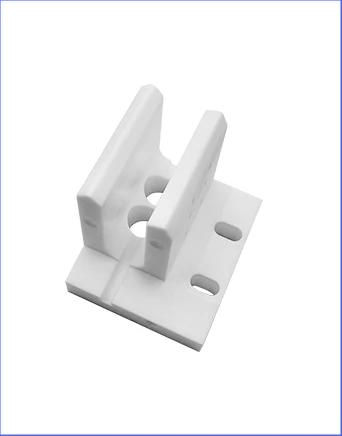Time to read: 6 min

Achieving a polished finish on 3D printed parts can elevate the final product's appearance and functionality. This guide offers a comprehensive look at the ABS acetone smoothing process, a popular post-processing technique for creating smooth, professional-looking ABS components.
The Quest for Smooth 3D Prints
3D printed parts, especially those using ABS filament, often exhibit a rough, layered surface texture. To refine these surfaces and achieve a glossy finish, many turn to acetone smoothing, a method that effectively fuses the visible print layers.
Understanding ABS Acetone Smoothing
ABS acetone smoothing leverages the solvent properties of acetone to dissolve and blend the surface layers of ABS, resulting in a seamless, glossy appearance.
Chemistry Behind the Process
Acetone's unique ability to dissolve both polar and nonpolar substances makes it an ideal solvent for ABS, a thermoplastic polymer. The interaction between acetone and ABS leads to a near-dissolution of the ABS surface, promoting layer fusion and creating a smooth finish.
Why Choose Acetone Smoothing for ABS?
Acetone smoothing offers several advantages for ABS parts, including:
- Glossy Finish: Transforms the surface from matte to glossy, enhancing visual appeal.
- Layer Line Elimination: Removes visible layer lines, mimicking the look of injection-molded parts.
- Strengthening Effect: May improve interlayer adhesion, contributing to part strength.
Materials and Safety First
To embark on acetone smoothing, gather high-purity acetone and appropriate safety equipment, including:
- Safety glasses or goggles
- Respirator or mask
- Chemical-resistant gloves
- Long-sleeved clothing
- Adequate ventilation
- Fire extinguisher
Step-by-Step ABS Acetone Smoothing
The acetone smoothing process involves careful preparation and monitoring:
Step 1: Preparing the ABS Part
Start with a clean, dry ABS part. Use plastic files to smooth aggressive points and layer edges.
Step 2: Applying Acetone
Choose between brushing on liquid acetone or creating an acetone vapor bath for a more uniform effect.
Step 3: Monitoring and Controlling
Keep a close watch on the smoothing process, adjusting timing and acetone exposure to avoid over-smoothing.
Step 4: Finishing Touches
Once the desired smoothness is achieved, carefully remove the part, allow it to dry, and apply any desired post-smoothing treatments.
Safety Precautions
Acetone's flammability and potential health risks demand strict safety measures. Work in a well-ventilated area, wear protective gear, and store acetone safely.
Alternatives to Acetone Smoothing
For those preferring a chemical-free approach, consider sanding and polishing as alternative smoothing methods.
Conclusion
ABS acetone smoothing is a powerful post-processing technique for 3D printed parts, offering a high-quality finish that can meet various industry standards. By following the outlined steps and prioritizing safety, you can achieve professional-grade results.




